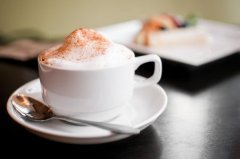An Analysis of the important factors leading to the High Price of Coffee
Leaving aside the glory of Shanghai before liberation, the real development of the coffee industry in Shanghai, including the whole country, is only 10 years. Ten years ago in the millennium, China's first Starbucks officially opened in Beijing, which also opened a golden decade for the development of China's coffee industry. With Dior and other stores on the island springing up all over the country and international chains such as Costa, The Coffee Bean & Tea Leaf entering the Chinese mainland market, the Chinese government finally recognized barista as the sixth batch of new jobs in China in 2006. In 2008, the first store of 85C was officially opened on Fuzhou Road. Although the store was harmonized three days later because some of its processes did not conform to Chinese characteristics, the trend of 85C soon swept through first-tier cities across the country, heralding the general trend of the popularization of coffee. In 2010, the Ministry of Education formally included the vocational course of barista as a professional subject in vocational schools such as technical secondary schools.

Chinese Coffee Shop-- the highest Price and low quality Coffee Shop in the World
The initial pricing power of the Chinese coffee market was actually in the hands of Starbucks. After Starbucks entered China in 2000, it set a price for China's Starbucks according to the exchange rate of RMB against the US dollar at that time. Since then, this price has also become the unified pricing of coffee shops in almost all cities in China. Today, it is still accepted by the vast majority of coffee shops. What is more interesting is that Although there is a big gap in consumption and income between China's first-tier cities and second-and third-tier cities, the price of coffee is almost uniform across the country, and it is often more expensive in smaller cities.
In fact, with the continuous rise of the RMB exchange rate in recent years, the price of Chinese coffee, regardless of the national income ratio, its absolute price is also rising, and has taken the lead in achieving the great goal of catching up with Britain and the United States. At present, the average price of domestic coffee is about 28 yuan, which is equivalent to about 4.1 US dollars and 3.4 euros at the exchange rate in June 2010.
According to 2009 statistics, the price of coffee lattes sold by Starbucks in the United States is $2.70, while the average price of coffee from Starbucks is around $2. In Europe, in the best coffee shops on both sides of the Seine in France, coffee is usually 1-2 euros, rarely more than 3 euros. In Italy, the price of a cup of Espresso is generally 0.50 euros. In places where per capita income is nearly 10 times that of Chinese, coffee is cheaper than in China. More importantly, coffee sold at high prices in China is often not high-quality coffee. This is a question worth pondering and exploring. Can the quality of coffee in China improve at the same time as the price?
What drives up the price of coffee in China?
If it is excusable for the high price of imported Chinese coffee due to the low exchange rate in the early days, why is the price of coffee still high today? What makes the regulation of the market lose its function in coffee shops? The answer is that the current high price of coffee is forced by helplessness, and there are very few coffee shops in China that really make money.
Coffee shop's biggest enemy-real estate!
China's coffee industry can be said to be the biggest victim of the development of China's real estate industry. Unfortunately, the golden decade of Chinese coffee is also the golden decade of China's real estate industry. For the vast majority of coffee shops, the material cost of coffee is not the biggest cost of coffee shops. in fact, generally speaking, the material cost of coffee only accounts for 10%-15% of the price, and it will be even lower for chain stores. For example, McDonald's beverage costs should not exceed 1.5 yuan with packaging; happy lemons sell for 5-6 yuan, including packaging costs of 1 yuan. Baber, Pizza Hut, Typhoon Shelter Tea Restaurant and other well-known chain stores, their beverage costs are controlled within 3 yuan. Dio on Shanghai Island sells 35 yuan of coffee, and its material cost is as low as 1.20 yuan. So in China, what we spend money on is not coffee, but additional things such as rent and environment, but coffee itself is not so important.
The high rent not only raises the rent of the store, but also raises the salary of the staff. what makes the coffee shop owners helpless is that many people in China go to the coffee shop and stay all day, resulting in a very low turnover rate of the coffee shop. This also indirectly promotes the cost of coffee.
Important Notice :
前街咖啡 FrontStreet Coffee has moved to new addredd:
FrontStreet Coffee Address: 315,Donghua East Road,GuangZhou
Tel:020 38364473
- Prev

Coffee Basic Knowledge Coffee Changes Human Life
Do you remember that phrase? When I'm not at home, I'm at the cafe. When I'm not at the cafe, I'm on my way to the cafe. Perhaps it is a cup of mellow coffee with exquisite snacks and charming music composed of beautiful and comfortable residence, only to have such magic, this is the cafe. Being in it, holding a cup of coffee in hand, feeling the beauty of dynamic acme in stillness, regardless of time in hand
- Next

The core of coffee-coffee farmers
The curiosity and desire for coffee leads people who love coffee to study and discuss coffee in various fields. In many cities, there are groups of baristas who gather together to talk about taste, discuss production, have formal discussions and have informal activities. From how to brew coffee with different utensils, to all kinds of stories about coffee, it seems forever.
Related
- Beginners will see the "Coffee pull flower" guide!
- What is the difference between ice blog purified milk and ordinary milk coffee?
- Why is the Philippines the largest producer of crops in Liberia?
- For coffee extraction, should the fine powder be retained?
- How does extracted espresso fill pressed powder? How much strength does it take to press the powder?
- How to make jasmine cold extract coffee? Is the jasmine + latte good?
- Will this little toy really make the coffee taste better? How does Lily Drip affect coffee extraction?
- Will the action of slapping the filter cup also affect coffee extraction?
- What's the difference between powder-to-water ratio and powder-to-liquid ratio?
- What is the Ethiopian local species? What does it have to do with Heirloom native species?

